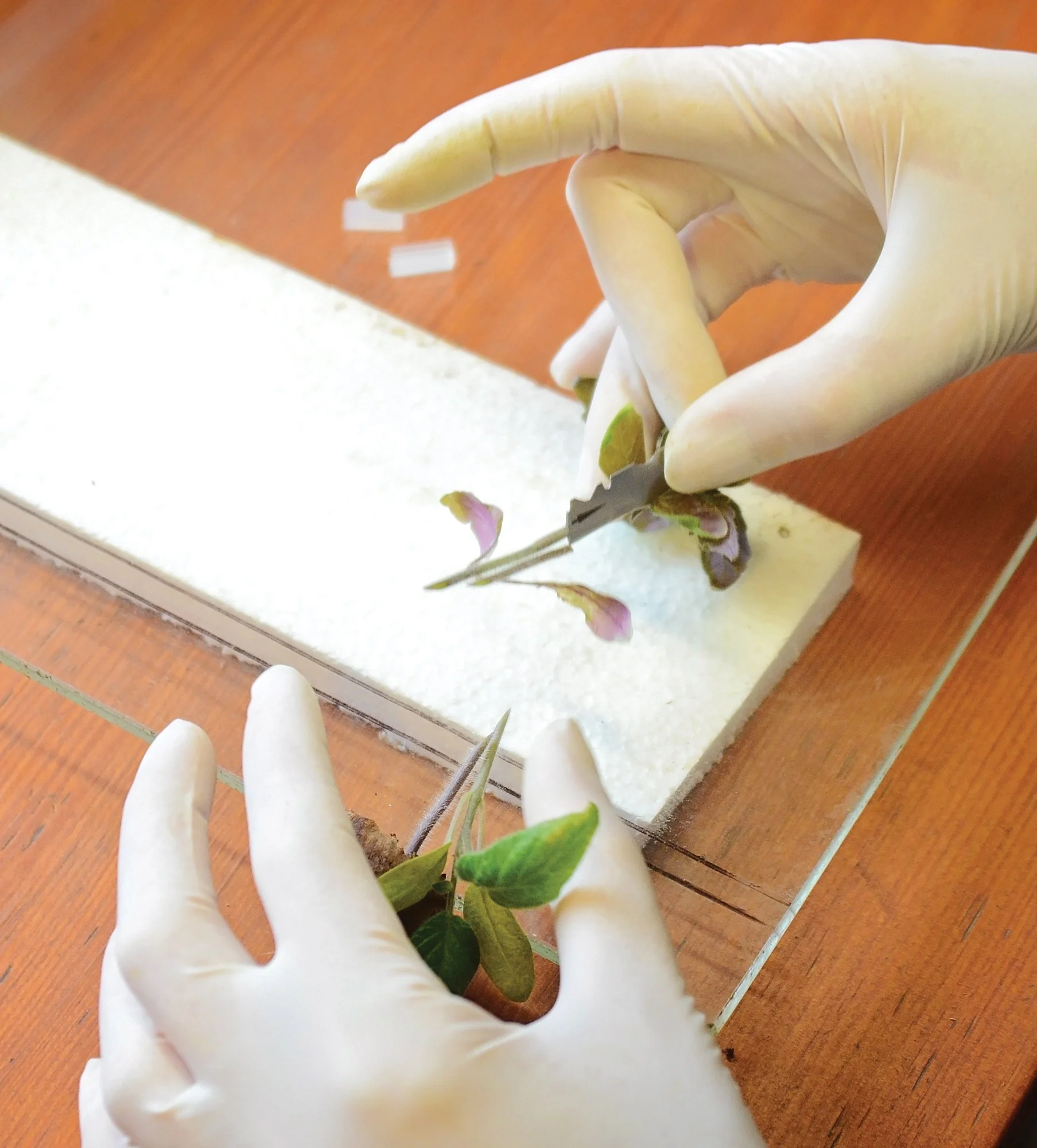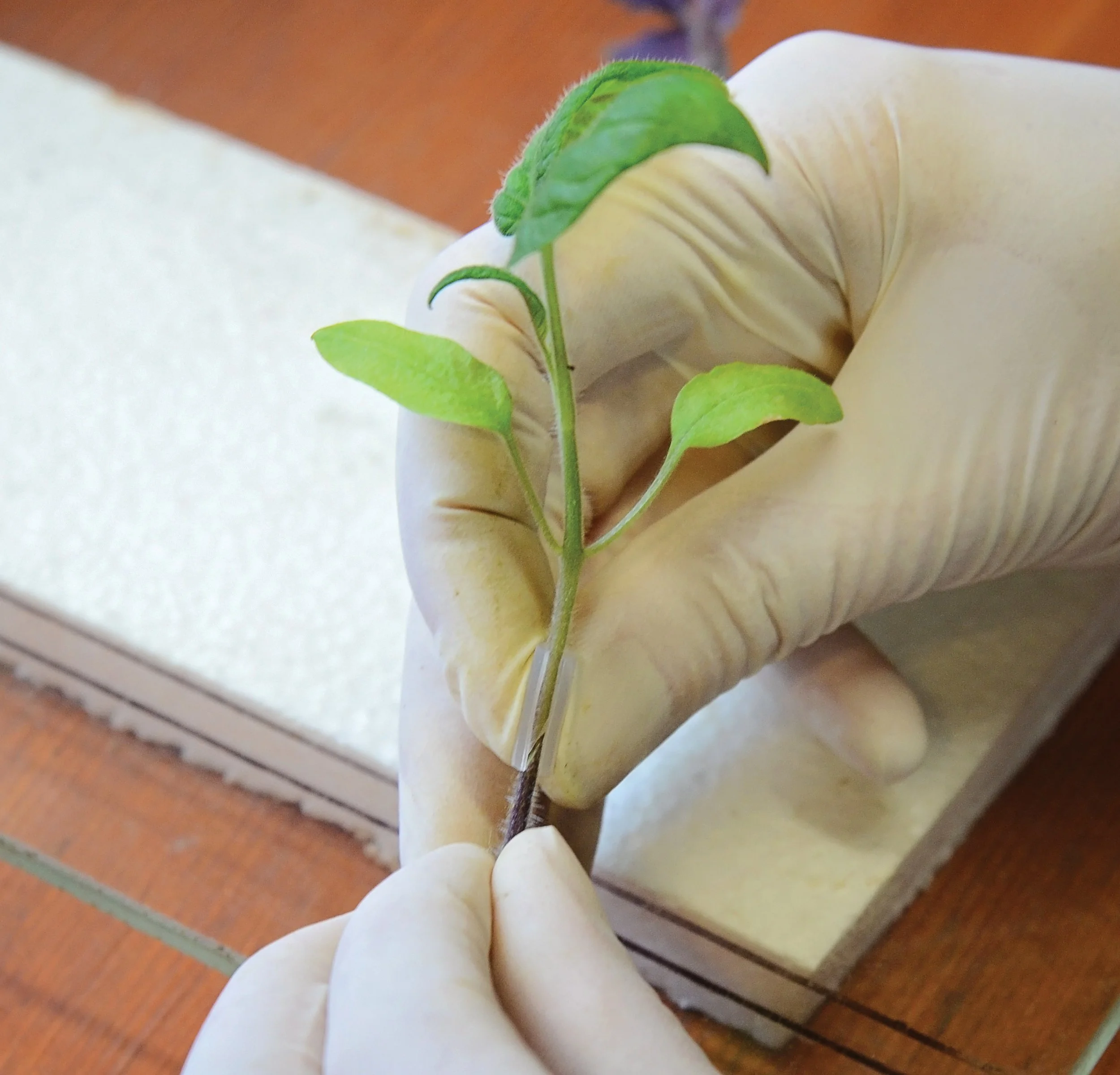Grafted Plants for the Gardening Win!
Here at Territorial Seed Company, we are big fans of grafted plants, so much so that we have been offering them to our customers for almost 15 years! For some, however, growing grafted plants is still a new concept, so let’s dive into the basics!
What is a Grafted Vegetable Plant?
Grafted vegetables are created when the top part of one plant (the scion) is attached to the root system of a separate plant (the rootstock). The rootstock contributes vigor and disease resistance while the scion is chosen for fruit flavor and quality. Grafting has been used in agriculture for centuries to improve plant health and yield; fruit trees and grape vines are two familiar examples. Grafted vegetables are widespread in Asia and Europe among produce growers and are gaining popularity in the US, especially with organic farmers. Our plants are grafted by hand in a unique, carefully controlled environment using innovative methods developed here in Oregon.
Benefits of Grafted Vegetables over Non-Grafted Plants
Grafted plant (right) vs Non-grafted plant (left)
Better quality crops and increased fruit production
Increased water and nutrient uptake
Extended harvests
Increased disease resistance such as resistance to early and late blight and blossom end rot
Increased overall plant vigor
Increased tolerance to environmental stresses such as extremes in heat and cold, and salinity
Grafted vegetables help solve common garden problems
Vigorous rootstock enables more effective uptake of water and nutrients, increases the plants’ resistance to pests or disease, and tolerance to temperature extremes and drought. This allows commercial growers—and now home gardeners—to plant earlier and harvest longer. Healthier, stronger plants also mean greatly reduced pesticide use and more yield. With grafted veggies, even gardeners in challenging climates can enjoy ample harvests of these classic garden crops.
Now that we hopefully have you convinced to give grafted plants a try, what happens when they arrive to your house?
Receiving your grafted plant in the mail
Upon opening the box you may notice that some of the plants appear wilted. This should not harm the plants. Water the pots and place them in a partially sunny location. If you can’t plant them outside immediately, you may want to up-pot them into a larger container. Because of the different growth rates of some of the varieties, you may see a difference in size between the varieties.
Transplanting your grafted plant
Handle carefully when planting to avoid bending or putting pressure on the graft. Keep the graft line well above soil level. Remove any adventitious roots that may form just above the graft, so they don’t come into contact with the soil. If your plant comes with a grafting clip, you can either (carefully) remove it or leave it on and it will pop off as the plant grows.
Pruning and support of tomatoes
Tomatoes are our most popular option when it comes to grafted plants and pruning is crucial to containing and directing the plant’s energy to fruit production. For all grafted tomatoes, remove any suckers (side shoots) that form below the graft. After that, how much you prune will depend on whether your grafted tomato is a determinate or indeterminate variety.
Pruning and staking determinate tomatoes
It’s generally agreed that determinate tomatoes should be pruned very slightly, if at all. Because they are programmed to produce a certain amount of fruit and then stop, pruning them isn’t necessary to encourage further growth or additional fruit set. In fact, removing blossoms or suckers always reduces the overall number of tomatoes. However, to improve air circulation and keep the foliage away from soil-borne diseases, you may want to remove all the bottom branches and foliage, 10 or 12 inches up the main stem. This is especially important in wetter or cooler climates. Some gardeners also recommend pinching off the first few sets of blossoms, until plants are well-established in the garden.
Determinate varieties usually grow only 3 or 4 feet tall, and many sources say supports aren’t necessary for these bushier, sturdier plants. However, a short stake or cage will prop up the branches as they start to sag under the load of ripening fruit, holding them up off the ground and away from slugs and moisture that can cause rotting or spread disease.
Pruning and trellising indeterminate tomatoes
Opinions vary widely on how to prune indeterminate tomatoes. But without pruning, a super-vigorous grafted tomato will just keep growing, producing a riot of foliage. By strategically removing some of this excess, you will allow plants to ripen larger, tastier, earlier tomatoes, keep the foliage up off the ground, and reduce losses to pests and disease. As with determinate tomatoes, you can improve air circulation by removing all branches and suckers (the little shoots that emerge where each branch meets the main stem) from the bottom 10 or 12 inches of the stem.
Our favorite way to grow a grafted tomato is to prune it into two laterals (the main stem plus the side shoot or sucker just below the first fruit cluster) which are then trained up a trellis into a V shape. For double grafted tomatoes, prune each variety’s stem in the same manner, creating two V’s.
Throughout the summer, continue to pinch off the suckers that appear on both leaders. If plants seem to be getting too dense and bushy, you can remove a branch of foliage here and there to encourage good air circulation.
When making plans for next season’s garden, be sure to add grafted plants to the list! Our spring-shipped transplants will be available for pre-order starting in November. You can sign up on our website to be notified via email as soon as they’re restocked.
Happy gardening!








